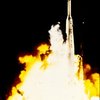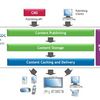Susan J. Campbell
The demand for data consumption and rich multimedia interactions is driving the call for 100 Gb/s. Fortunately, coherent technology in high-performance electro-optics engines enable the cost and performance benefits of such transmissions to be viable commercially.
A recent Alcatel-Lucent TechZine article by Sam Bucci, Vice President and General Manager, Terrestrial Optics, entitled, Coherent Technology: Making 100 Gb/s Viable, focused on how fiber impairments can decrease the performance and quality of the data transmission as speeds increase. It made a compelling case that such impairment can be overcome with coherent technology which ensures performance and cost benefits are optimized.
While what follows may be a bit technical, the facts are that network challenges exist when moving from slower to faster speeds. Fiber has been a true wonder for the delivery of high-performance and the ever increasing need for higher-speed networks for many years. However, they have not been immune from possible degradation as speeds increase. Indeed, fiber impairments can cause degraded signal quality leading to overall poor performance. The advanced electro-optics engine in the Alcatel-Lucent (ALU) solution leverages the concepts of optimized signal modulation along with coherent detection so that service providers can effectively overcome these challenges in their fiber networks.
As Bucci explains, the presence of coherent detection applied to optimal transmission creates a phase-modulated signal. This signal is then sent to the optimal mixer, which also receives a signal from a local oscillator. He notes that with beating in place, the optical signal operating at the same frequency as the oscillator is amplified, making all other frequencies non-coherent with the oscillator. This process provides an additional 2-dB improvement in the noise sensitivity compared with differential detection. In lay terms, less noise translates into much better signal quality and hence better quality performance.
The good news is that different phase-domain and polarization-domain modulation formats can be combined with coherent detection. This is important in terms of keeping expense down for service providers with heterogeneous optical networks. As the article points out, two formats in phase-domain and polarization domain modulation have emerged as primary candidates to help overcome network challenges in moving to 100-Gb/s optical systems:
- With PDM-QPSK, the signal carriers two bits per symbol per polarization
- In PDM-BPSK, the signal carries one bit per symbol per polarization
While the coherent architecture is more complex than conventional solutions, two key advantages exist: it provides the optical field carrier amplitude, full polarization and phase signal information for easy retrieval so it can be applied to compensate for linear distortions; and the encoding of multiple information bits is conducted through orthogonal polarizations of the optical signal. This is precisely what customers are looking for: transport capacity is increased and spectral efficiency is optimized.
At the end of the day what operators want, given their substantial fiber network investments with their long life-cycles, are ways to improve the performance and reach of their networks as they migrate to higher speeds and feeds.
This is exactly where coherent technology provides significant value-added. Three main benefits cited by ALU include:
- The elimination of dispersion compensation modules
- Restoration acceleration
- Improvements in signal propagation
In working with Alcatel-Lucent for coherent technology access, optical networks can be upgraded seamlessly to enjoy such benefits as the adaptation of existing dispersion managed links; the addition of older fiber plants without DCMs for transport, and the upgrade to 100 Gb/s in older fiber networks that would normally be a challenge.
We hear a lot of talk in the industry about graceful migrations to the future, and tend to overlook how difficult the plumbing may be to get there. This is especially the case when dealing with literally sunken assets. ALU is providing operators of physical optical networks the capabilities they are going to need to optimize the performance and reach of their networks as the world demands not just higher speeds but high-quality experiences.











